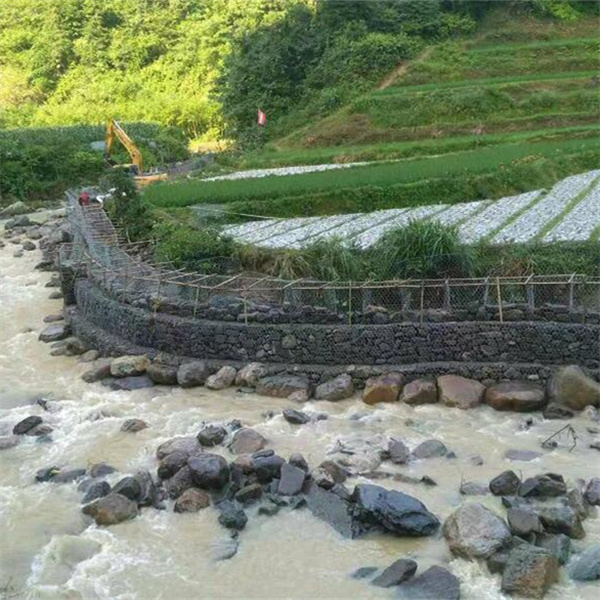Okt . 15, 2024 18:52 Back to list
Durable and Efficient Gabion Mesh for High-Quality Welded Applications
The Importance of High-Quality Welded Gabion Mesh in Modern Construction
In the realm of construction and civil engineering, the use of gabion structures has gained immense popularity over the years. These wire mesh containers, typically filled with rock or concrete, are often employed for erosion control, retaining walls, and in various landscaping applications. Central to the effectiveness and durability of gabion structures is the quality of the welded gabion mesh used. High-quality welded gabion mesh plays a crucial role in ensuring the resilience and longevity of these structures, making it an essential consideration for architects, engineers, and builders alike.
What is Welded Gabion Mesh?
Welded gabion mesh is a type of wire mesh that is created by welding together intersecting wires at their junctions. This technique produces a robust framework that can withstand the pressures exerted by the filling materials. Unlike traditional woven mesh, which relies on the tension of the weaving process for strength, welded mesh offers consistent strength and stability across the entire surface. This attribute makes welded gabion mesh particularly advantageous for applications where structural integrity is paramount.
Benefits of High-Quality Welded Gabion Mesh
1. Durability High-quality welded gabion mesh is typically made from galvanized steel, which provides excellent resistance to corrosion. This is especially important for projects exposed to moisture and other environmental factors. The longevity of gabion structures is significantly enhanced by using top-tier materials, reducing the frequency and costs associated with repairs and replacements.
2. Consistency in Quality The manufacturing process of high-quality welded gabion mesh ensures uniformity in the size and shape of the mesh openings. This consistency is vital for the proper functioning of gabion structures, allowing for even distribution of loads and minimizing weak points that could lead to failures under stress.
3. Easy Installation Welded gabion mesh is easier to handle and install compared to woven alternatives. The precut and uniform sizes of the mesh panels simplify the assembly process on-site, thereby saving time and labor costs during construction.
high quality welded gabion mesh

4. Aesthetic Appeal With the rise of landscaping applications, the visual aspects of construction materials cannot be overlooked. High-quality welded gabion mesh can be finished in various ways and combined with different filling materials, allowing for innovative designs that enhance the aesthetic appeal of public spaces, parks, and private properties.
5. Environmental Benefits Gabion structures filled with natural stones promote biodiversity by providing habitats for small wildlife. High-quality welded gabion mesh enables the construction of eco-friendly structures that harmonize with natural surroundings, contributing to sustainability efforts.
Applications of Welded Gabion Mesh
Welded gabion mesh finds its utility in a range of applications
- Erosion Control In landscaping and civil engineering, gabions are commonly used to control soil erosion by stabilizing slopes and riverbanks. - Retaining Walls They serve as effective retaining walls due to their ability to withstand significant lateral earth pressures. - Noise Barriers In urban areas, gabion walls can be designed to provide noise reduction, contributing to a more peaceful environment. - Architectural Features They can also be used creatively in architecture to create visually appealing landscape designs and decorative elements.
Conclusion
The significance of high-quality welded gabion mesh in contemporary construction cannot be overstated. Its durability, ease of installation, and aesthetic versatility make it a preferred choice for many projects. Whether addressing environmental concerns or enhancing the visual appeal of a landscape, welded gabion mesh provides reliable solutions that meet various construction needs. As we move towards a future that prioritizes sustainability and durability in construction, the demand for high-quality welded gabion mesh will undoubtedly continue to rise, cementing its role as a cornerstone in the building industry.
-
The Role of Galvanized Gabion Mesh in Riverbank Protection
NewsJun.26,2025
-
The Role of Gabion Basket Raised Bed in Sustainable Gardening
NewsJun.26,2025
-
Quality Assurance of Wire Mesh Gabion Baskets
NewsJun.26,2025
-
Installation Guide for Welded Gabion Box
NewsJun.26,2025
-
How to Choose the Right Gabion Box
NewsJun.26,2025
-
Different Types of Gabion Wire Mesh
NewsJun.26,2025
-
Why PVC Coated Gabion Mattress Is the Best Solution for Long-Term Erosion Control
NewsMay.23,2025






